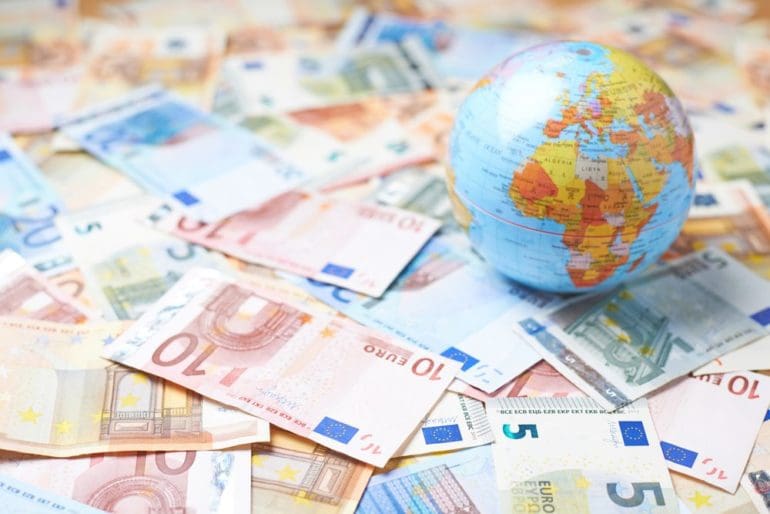Top 10 Tips On The Currency Exchange Rate Margin
Anyone working in the realm of international finance who wants to travel, conduct business, manage investments or conduct business internationally needs to be aware of exchange rate margins. The difference between the selling and buying rates of currency is what makes up the exchange rate margin. This can have an impact on the total cost of the transaction. The margins for exchange rates can differ widely between providers, impacting the cost you pay when exchanging money or how much profit you make when investing. When you understand the intricacies of exchange rate margins, you can make more informed decisions that save you money and enhance your financial performance. These are the ten most essential tips to control exchange rate margins.
1. Find out What the Exchange Rate Margin is.
– The exchange rate margin is often referred to the spread is the difference in the price that a currency is able to be purchased (ask price) and the price at which it is able to be offered for sale (bid price). Understanding the notion of exchange rates is essential for investors, travelers, and businesses. The actual rate that you receive will depend on the margin. A lower margin is a better exchange rate and can lead to better financial decision-making.
2. Compare Margins across Providers
Different financial institutions have different exchange rates margins. Before you make any exchanges with currency, you should take the time to compare these margins across multiple providers, such as banks, online platforms, and kiosks for currency exchange. Websites such XE.com and OANDA provide information on the current rates and margins. They help you choose the most suitable option for your transactions in currency.
3. Know the impact of market forces on margins
The margins of exchange rates are influenced by many different factors, such as the volatility of markets as well as economic indicators. In some cases, an economic crisis or political instability can result in a larger margin due to the higher risk. Stay informed of the underlying dynamics of the markets in order to predict currency rate fluctuations and make timely decision.
4. Exchange currency online
Online currency exchange platforms provide better exchange rates with less fees and margins as compared to traditional banks. Wise, also known as TransferWise and Revolut provide real-time exchange rates and lower fees. Utilizing these platforms can significantly reduce your costs when making currency exchanges for travel or business purposes.
5. Timing Your Currency Exchange
The timing that you use to exchange currencies could have an impact on the margins. The exchange rate is constantly changing according to supply and demand. Monitoring these fluctuations could help you find the best rates for exchange, and may increase your margins. Tools that track the trend of currency are helpful in making these decisions.
6. Leverage Strategies for Currency Hedging
Businesses and investors can manage the margins of exchange rates more efficiently by using currency hedging. Hedging involves the use of financial instruments to secure exchange rates for future transactions, thus safeguarding against fluctuations in currency values. This helps reduce the impact of margins increasing and increase profit stability for international companies.
7. Pay attention to Economic Indicators
Different economic indicators, including rate of inflation, interest rates, as well as employment data impact exchange rates and their margins. For example, a country with higher interest rates might attracted foreign investment, thus increasing its currency and reducing the margin of exchange. Through monitoring these indicators you will be able to gain insight into the potential for currency fluctuations and adapt your strategies for exchange accordingly.
8. Take into consideration local currency when you travel.
Pay using local currency while you travel instead of the currency you use in your country of origin. This will help you avoid unfavorable exchange rate margins, which often are associated with dynamic currency conversion (DCC) options provided by retailers. In general, making purchases in the local currency can result in a more favorable rate of exchange. This could lower the total cost of the purchase abroad.
9. Beware of hidden charges
Beware of hidden costs. Exchange services can add additional charges in addition to the exchange rate margins. They may charge transaction, service, and commission fees that could increase the margins you can see. Before deciding to exchange currency, make sure you review all the fine print and inquire about any additional fees.
10. Consult Financial Experts for Large Transactions
Get in touch with experts in the field of finance and currency to gain valuable insight if you have to deal massive sums or complex exchanges. These professionals will help you understand the rate of exchange margins and offer strategies to lower costs. They can be especially helpful to businesses that carry out international transactions or to investors who want to optimize their currency holdings.
These detailed guidelines on margins for exchange will assist you in navigating the maze of transactions in currencies, whether you're on the road in business, managing investments, conducting business or both. Knowing how to manage the margins of exchange rates will help you make better financial decisions, aligned with your goals. This will end up saving you money as well as improve your financial plan. Check out the top rated get more information on USD to AED for more advice including convert euro to usd, 1 us dollar in indian rupees, php to usd, mexican peso to usd, us dollar to pkr, dinar guru, usd to php, doller to rupee, currency converter, usd jpy and more.

Ten Suggestions For A More Efficient Payment Method, In The Area Of Exchange Rates As Well As Currencies
In today's world economy, selecting the correct payment method is crucial to effectively managing financial transactions, whether you're on the road doing business, or assessing investments. A choice of payment method has an impact on the cost, convenience and security. Different payment options have different charges, exchange rates and acceptance levels, which can affect the overall experience as well as the financial outcomes. Understanding the specifics of payment methods will empower you to make informed choices that align with your goals. Below are the top ten details on how to select and utilizing payment methods effectively to manage your finances.
1. What are the payment options?
Be familiar with options for payment, including cash, credit/debit card, mobile payments, digital wallets. Each option has both advantages and disadvantages in regards to convenience, fees, or acceptance. Cash is everywhere but it's rarely convenient or secure for transactions of large amounts. Understanding the strengths of each payment method will allow you to choose the one most suitable for your needs.
2. Costs for Currency Conversion
Be aware that currency conversion costs may be charged when you use a credit card or debit card for international transactions. These fees can differ significantly between credit card and bank firms. Some cards have an additional charge for foreign transactions however, others don't. When you travel or make purchases in another country, consult your bank or credit card provider to learn about their policies on charges for currency conversion and select cards that will reduce these costs.
3. Use Credit Cards with No Foreign Transaction Charges
If you're planning to travel internationally or purchase in foreign currency Choose a credit card that doesn't charge fees for transactions that are foreign. A lot of credit cards specifically designed for travel have this option, which permits users to make purchases when you are in foreign countries without incurring extra costs. This could help you save dollars, particularly if you are frequent travelers or have a large amount of purchases to make on foreign markets.
4. Make use of mobile alternatives
Mobile payment services, like Apple Pay, Google Pay and a variety of other digital wallets offer an easy method of conducting transactions without the need to carry cash or credit cards. These services often offer enhanced security features, including biometric authentication and tokenization which makes them a secure choice for in-person and online transactions. If you want to reduce your expenses, you should consider mobile payment options, especially for purchases of a small amount.
5. Be Mindful of ATM Charges when withdrawing cash
If you must withdraw cash during your travels be aware of the potential ATM fees that may vary greatly. Some banks charge fees when withdrawing funds abroad, whereas others may collaborate with local banks in order to provide free withdrawals. You can reduce your expenses by looking for ATM networks that charge less fees. Also, think about withdrawing larger amounts at once to reduce the amount of transactions and the associated fees.
6. Alternative payment options are planned for
A backup payment method will help you avoid any disruptions if your primary payment method fails or gets lost. To ensure that you will continue to purchase goods, you should carry an additional debit card, credit card cash, mobile, or payment options. This is especially important when you travel, since certain locations may not accept every payment method. Planning ahead will help you to avoid unexpected situations.
7. Track Exchange Rates for Better Decisions
When you purchase foreign currencies, keep track of the exchange rates in effect. This will allow you decide whether to convert money, or make use of your preferred payment method. Making use of apps and tools that monitor real-time exchange rates will help you determine favorable conditions for converting currency. This could affect the payment method you choose particularly if there are fees connected with conversions of currency.
8. Be Aware Of Security Features
– When choosing a payment method be sure to put your focus on security. Check out the security features offered by your payment service provider or credit card provider, or the bank. Select options that offer the protection against fraud, transaction notifications and encryption. Secure payment methods protect you against fraud and unauthorized transactions. This is crucial when you shop online or abroad.
9. Review Payment Policy Guidelines for Business
If you're an owner of a business, knowing the payment policy is essential to managing the flow of cash and customer transactions. It is crucial to assess various payment processors according to their acceptance rates, charges, and features. Select a payment method that aligns with your business goals, regardless of whether you value low transaction fees, fast processing times, or customer convenience. A well-chosen payment method can increase customer satisfaction and simplify your business.
10. Learn More About the various methods of investment payment
Investors need to be aware of the options available to pay for and selling assets. There could be a variety of payment methods for funding or operating accounts on various brokerage platforms. Familiarize yourself with the fees and processing times associated with these strategies. Additionally, you must consider the ways that leveraged or margin accounts investments can affect your financial plan.
Use these guidelines to help you navigate the complexities of business, travel and investment with greater efficiency. Knowing what options are available, associated fees, and security options will allow you to make more informed choices in your financial life that are compatible with your objectives. The right payment method will improve your experience, assist you save money, and provide peace of mind when it comes to your finances. Take a look at the most popular eur huf for site advice including yen to us dollar, usd to indian rupees, japanese yen to usd, usd to rs, won to usd, us dollar to japanese yen, us dollar to japanese yen, us dollar to pakistani rupee, dollar to euro, usd to eur and more.
![]()




